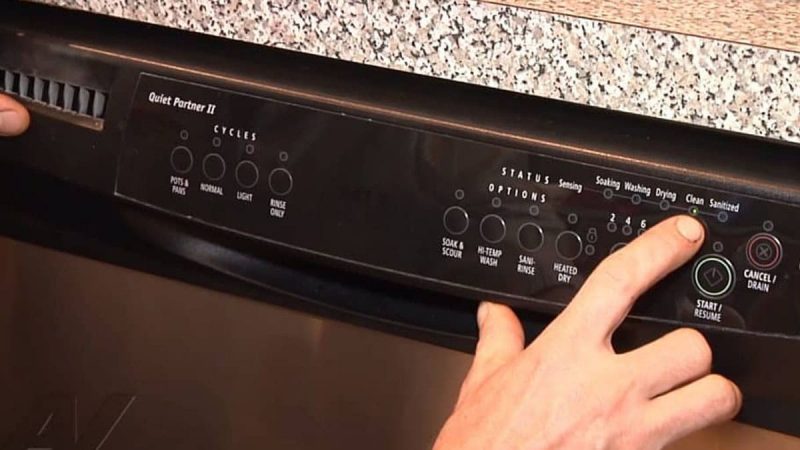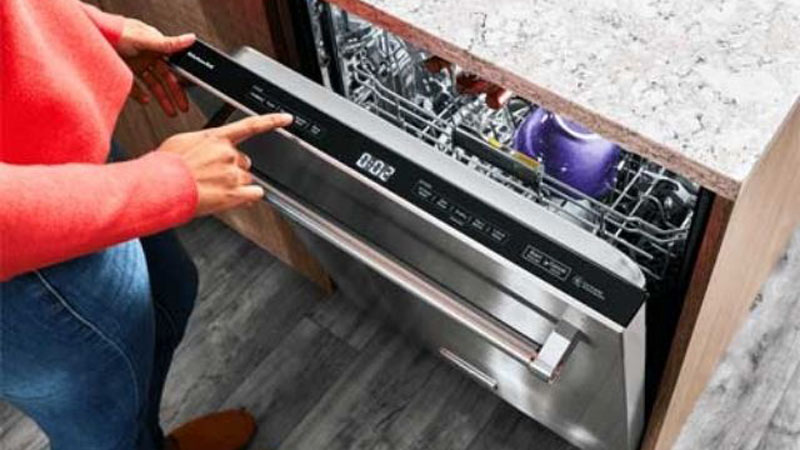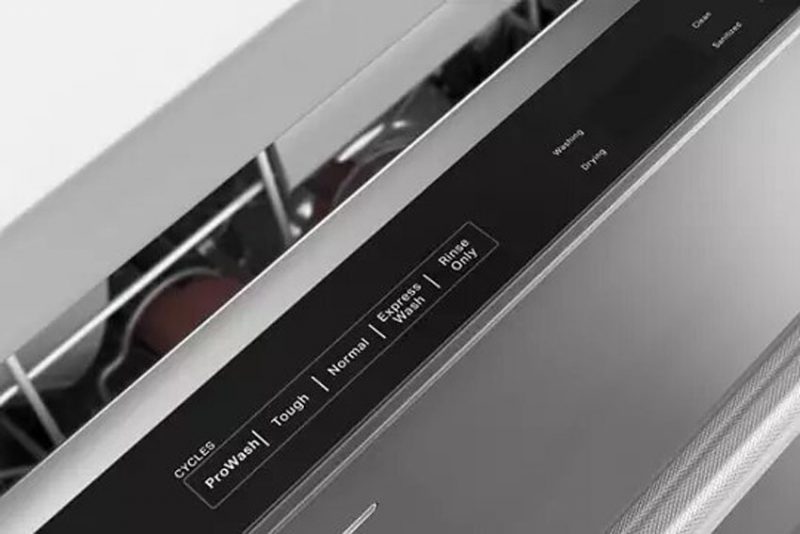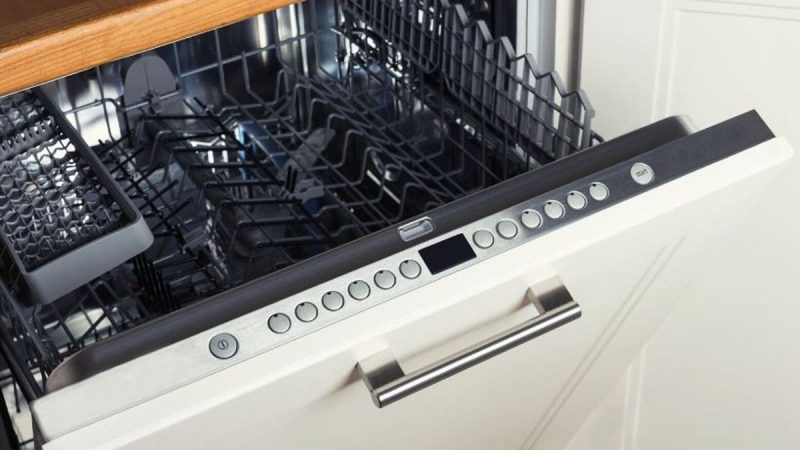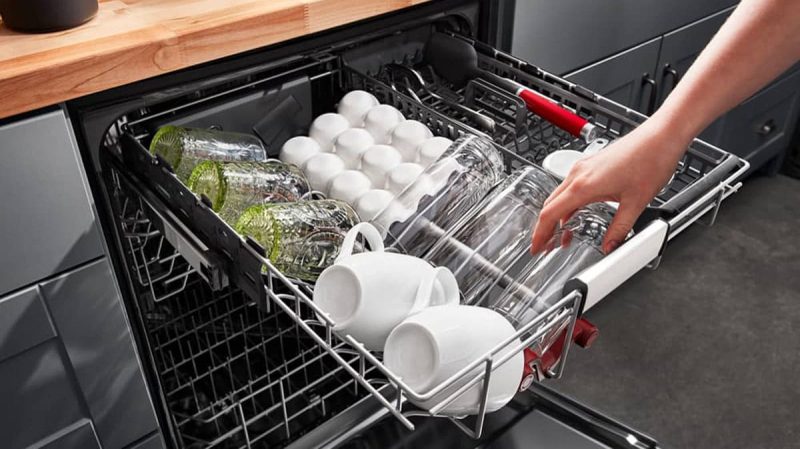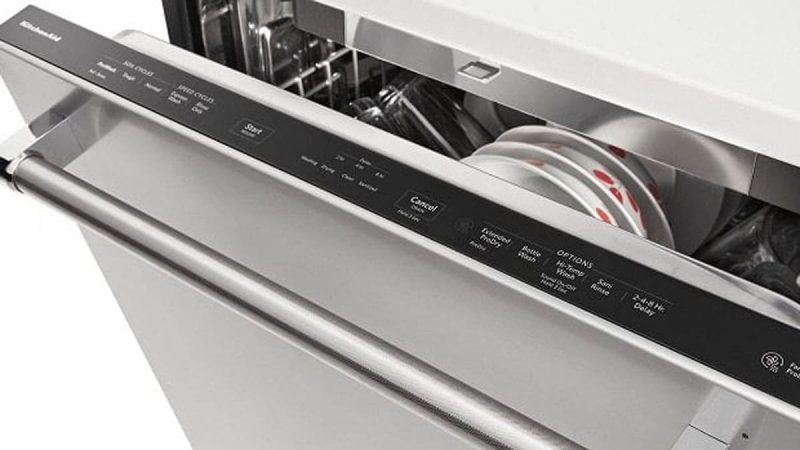If you have problems with any of these dishwashers, the first thing to do is to reboot. There is no single reset button for them, although its presence would certainly not be superfluous so that you can simply press and solve the problem in an instant. Instead, you will have to click on other buttons, while strict adherence to the sequence plays an important role.
There is a special reason why the dishwashers in question have been included in this article. Although most of these systems are similar, that is, they suffer from the same problems. Whirlpool acquired KitchenAid in 1989 and has since specialized in large appliances, including dishwashing appliances.
Identical reset algorithms
So why is it important that KitchenAid be a Whirlpool? This is due, first of all, to the fact that many dishwashers of these brands use similar parts and controllers. Let’s say you need to disassemble KitchenAid. An impressive amount of Whirlpool parts will likely be found inside. Not surprisingly, for these reasons, the reboot options are similar.
What are the reset jobs?
If we are talking about a standard, or simple reset, you must adhere to the following guide:
- disconnect the machine from the source from which it receives power;
- leave her alone for literally one minute;
- reactivate electricity;
- start washing in a new cycle.
Let’s say your dishwasher is already connected to your home’s electrical outlet. If this is indeed true, turning off the circuit breaker and leaving it like this for a minute is required. As soon as the agreed time has passed, it will be possible to immediately start the power and examine the system in terms of correct operation.
What is the reset sequence?
It can be assumed that the previous step did not lead to the desired result. Instead, a reset sequence may need to be performed. In the instruction manual, as well as on many resources on the Internet, it will not be difficult to discover the fact that this process is nothing more than starting a service diagnostics cycle.
In order to implement a sequential reset, you will have to press more than one button within the control panel. Moreover, it will be necessary to act within the framework of a certain algorithm of actions. Usually there are 2 sequences that can be used, whether it’s a KitchenAid washing machine or a Whirlpool. To make it easier to understand, you can simply call them 1-2-3 and 1-2.
Order 1-2-3
As part of this sequence, three absolutely any buttons are pressed within the control panel, but not power and cancel. This must be done three times. The algorithm of actions can be as follows.
- First you should make sure that the dishwasher is in standby mode.
- Next, from left to right, three keys are pressed, but not together, but sequentially.
- Then all these actions are repeated 3 times with an interval of a maximum of 1 second.
If the door is not closed, this must be done. If the sequence turned out to be rational, the user will see that the panel goes out. Then it will blink several times, in particular, the word “cleaning” or “completed” will appear. This indicates the successful loading of the diagnostic cycle provided by the service.
What will be next? If the cycle is carried out correctly, the system will clear its own memory and restore the settings automatically. Then she will start the calibration of the sensor, that is, self-diagnosis for the existence of problems. This process will take an average of 23 minutes. Breaks are not allowed.
Order 1-2
If the previous sequence did not work for any reason, it is necessary to use a different, but similar algorithm – 1-2. This is how it works.
- First you need to understand that the machine is really in standby mode.
- Next, you should click on the buttons in turn. For example, a model may require a click on the High Temp Scrub or Sani Rinse, Air Dry button.
- When applying certain models, this sequence must be repeated 4, 8 or 10 times. To guarantee your safety, you must repeat 2 button presses 10 times until the diagnostic and reset process begins.
If everything went well, the diagnostic cycle starts. The user will understand that the lights are flashing randomly and will also hear the machine go through several cycles in succession. After that, testing of LED systems and related options will begin.
Next, the device will be rebooted and its memory cleared as part of the return to the settings from the factory. In total, as in the previous case, all this will take about 23 minutes of time. The machine must be able to complete the entire cycle without interruption.
Entering diagnostic mode
This is perhaps all the information that you need to have in order to have access to a diagnostic operation regarding a KitchenAid or Whirlpool machine. But it’s worth getting to know what it is. The essence of service diagnostics is to pass tests. Depending on the specific model, this procedure may take 20 minutes or more.
During the cycle, the dishwasher may display error codes. This allows you to report that something is not functioning correctly. The diagnostic mode starts the dishwasher in order to check a whole range of functions. This process can begin with testing all kinds of indicators, including indicators of cycles, functions, states.
After that, the forces of the device check all kinds of sensors and elements:
- an opening designed for ventilation;
- motor unit;
- element required for heating.
The more LEDs and options a KitchenAid or Whirlpool appliance has, the longer it will take to complete the testing process. This can be done using identical techniques as described previously.
The exact course of action may vary according to the models the owner has. But both sequences can be involved with the same probability. That is, we are talking about using two or three buttons. To complete order 1-2 you need:
- press 2 buttons in turn with an interval of 1 second;
- repeat the action 10 times.
To follow the 1-2-3 order, you need to:
- click on 3 buttons in turn with an interval of up to 1 second;
- repeat three times.
If the user sees the random blinking of the LEDs and hears the operation of the machine in various cycles, this indicates the start of the diagnostic process. In order for it to be completed, the device must pass certain tests, and in practice they are presented in large numbers and are versatile.
To skip all these periods of time, all it takes is pressing the cycle buttons. So, it can be pots and pans, that is, different categories according to severity and type of processing. After the process comes to an end, it will be possible to detect error codes and report that something is working erroneously.
How are KitchenAid or Whirlpool error codes read?
In addition to generic elements and reset sequences, KitchenAid or Whirlpool dishwashers also assume identical display techniques that can be read. In accordance with the model, it will not be difficult to detect their clear display with letters and numbers, as well as notice that the indicator flashes at the “clear” mark, these are patterns that indicate the presence of certain problems.
So, for example, within certain models, error codes “F1E1” will be displayed. Similar shortcomings can make themselves felt on other models, when the “cleanliness” indicator flashes once, then stops for 2 seconds and then flashes again. In the first case, blinking may indicate the code value of the function, and in the second situation, it may indicate a problem code.

